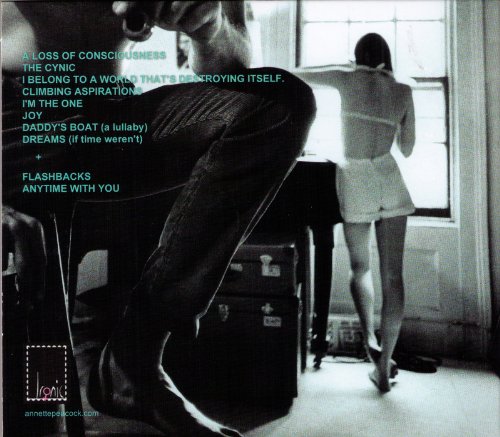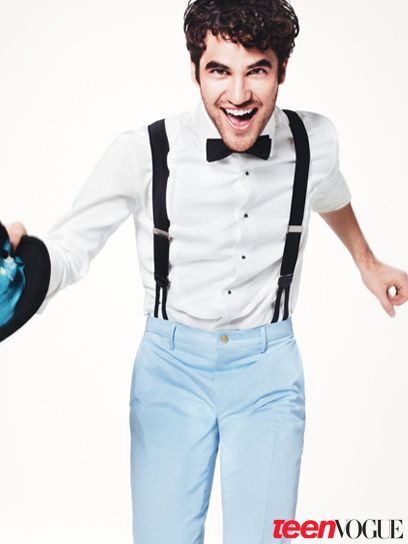How to dance popping and locking
Your Guide to Popping and Locking
© Sinisa Kanizaj / Red Bull Content Pool
How did popping and locking come to be? Find out more about the dance style and the moves to create more emotive dances.
Written by Red Bull Editorial Team
4 min readPublished on
Popping and locking have inspired hip hop, dubstep, and other modern dance moves for a long time. These two dance styles differ in their movements, though. While both dance styles tend to intertwine, popping and locking is a combined style of dance that has a very distinct rhythm. This unique move is the combination of two movements: the pop and the lock.
What Is Popping and Locking?
Popping has its roots in Fresno, California, and is the creation of Sam “Boogaloo Sam” of the group Electric Boogaloos. Locking is the creation of Don Campbell, a member of the Lockers, a Los Angeles group. These two moves combine to form a basis for hip hop, dubstep, and contemporary dancers to play into their choreography. Here's a guide to help you understand the moves and how you can up your popping and locking game so you can get better and create more emotive dances.
Practice Popping With Some Basic Moves
Dive into perfecting your popping by learning some of the basics. First of all, popping involves contracting and relaxing your muscles, creating a hit effect when you put it to the beat of the music you're dancing to. You can use popping in quick successions or in slow and controlled movements to add emphasis to certain beats in the music.
Popping Simcho performs at the Red Bull Dance Your Style Pre-World Final
© Little Shao/Red Bull Content Pool
The Forearm Hit
To get the hang of popping, start with a basic forearm hit or forearm pop. Just contract and relax the muscles of your forearm to the beat of the music, either in fast hits or slow hits to reflect the different points in the rhythm that you want to make stand out in your dance.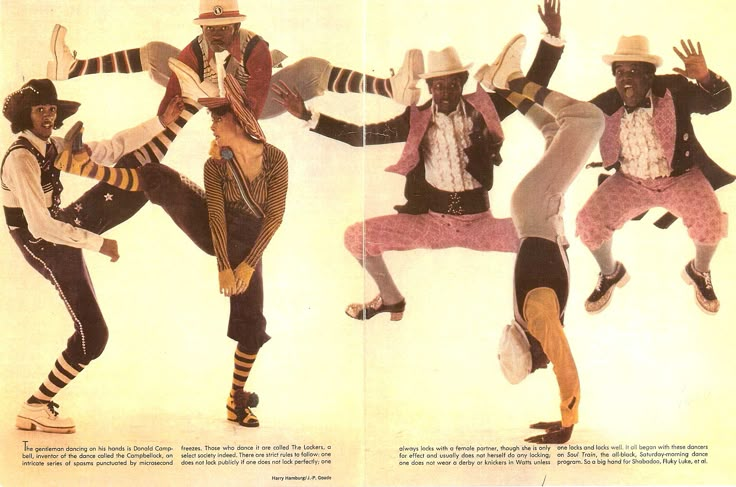
The Chest Pop
When you do a chest pop, you're pretty much doing the same thing as you do with a forearm hit, except the movement is in your chest muscles. Contract your chest inward quickly, almost where it feels like you're jerking your body in, but keep it controlled. Relax the tension in your chest muscles as quickly as you contract, and repeat the motion in the pattern you need for your choreography.
Play with this move by contracting and relaxing the muscles in your chest as you shift your body parts in different directions during your dance routine. Combine your forearm hits with your chest pops to create a flow to the music. You can use these two popping moves to form the basis of other moves you put into your dances.
Next Comes Locking
Locking is just stopping right in the middle of a quick movement and holding that position for a moment before flowing back into your dance. It's pretty easy to do. Just go through your routine and put these stops at different points in the music that you want to accent with your body.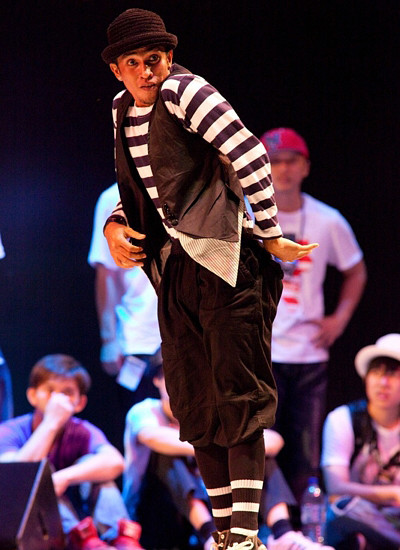 Freeze your dance in a position that drives your choreography to the rhythm, hold it for a couple of beats, and continue the routine. Here are some signature lock dance moves you can practice to hone your skills as a dubstep or hip hop dancer.
Freeze your dance in a position that drives your choreography to the rhythm, hold it for a couple of beats, and continue the routine. Here are some signature lock dance moves you can practice to hone your skills as a dubstep or hip hop dancer.
Greenteck poses for a portrait during the Red Bull Dancers Tour Japan
© Little Shao/Red Bull Content Pool
Ask for Five
This locking dance step looks like the hand signal for a high five. To pull off this lock, listen for the points in the music where you want to put your stop, and start playing it out in your choreography. Dance your routine and lock your hand in a high-five position for several beats.
This looks awesome when you follow through with a forearm hit to emphasize the beat of the music. You can use the ask for five move in a few different ways. In one, you can do it one-handed where you freeze your hand right in front of your body, or you can use both hands as you flow with forearm hits. It's really up to you how much or how little you put the move into your dance steps.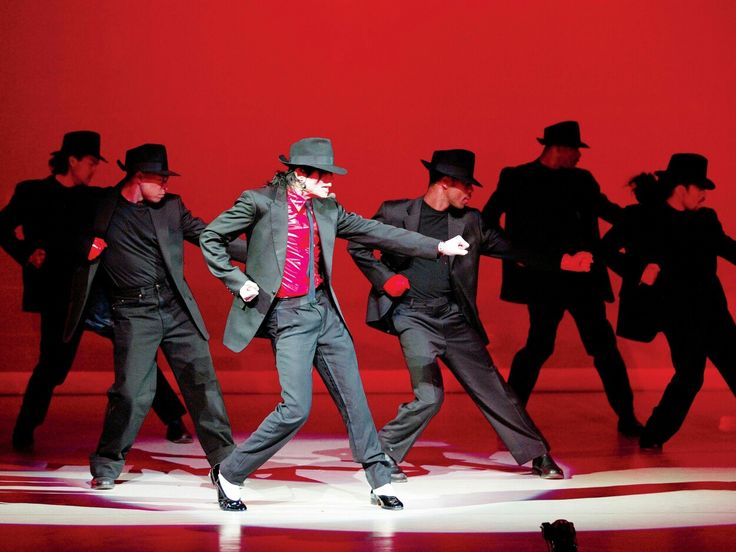
Locking Points
To pull off this lock, incorporate pointing in your choreography. Dance your routine and at certain beats through the music, freeze your hand while pointing at something or someone. This can accent your moves in a really cool-looking way on stage, especially if you're performing with live musicians, so you can lock point at the guitarist, drummer, or other person playing on stage with you.
Popping and locking are unique dance moves that have a long history of influencing popular and mainstream hip hop and other dance styles. Today, street dancers who favor contemporary styles like funk dances and dubstep can use the popping and locking moves to bring out the music, beat, and one-of-a-kind dance style. So give some of these moves a try, and if you're up for learning more, there are always dance lessons from the pros.
How To Learn Popping – The Ultimate Popping Training Guide
Want a clear, easy-to-follow guide to learn Popping? This 8-week Popping Training Guide is the perfect way for beginners to cover all the major Popping techniques.
The Popping training guide is divided up like this:
Week 1: Hitting, Arm Waves
Week 2: Body Waves, Glides
Week 3: Review, Freestyle
Week 4: Isolation, Animation
Week 5: Fresno, Flexes Week
6: Review, Freestyle Week
7: Walk out / Boogaloo, Twist, Tuts
Week 8: Review, Freestyle
Follow this Popping Training Guide to learn and practice all the basic Popping moves you need to know.
You can also download this Popping Training Calendar PDF to custom-plan your schedule:
Download Your 8 Week Training Calendar To Follow Along!
Popping Technique 1: Hitting
Learn how to hit:
Hitting (or popping) is when you flex and release your muscles as quickly and as powerfully as possible. Hitting is done to the beats in music.
For more in-depth instruction, read: Learn How To Pop, Or Hit With Your Body!
Drill Popping hits:
Practice by hitting one body part at a time (arms, legs, chest/torso, neck), in different positions.
Play this song:
- 4 8-counts: Hit with your arms extended straight in front of you, parallel to each other
- 4 8-counts: Hit with your arms extended straight out, perpendicular to the ground
- 1 8-count: From this position, hit as your arm rises up in increments until they are straight up above your head, parallel to each other.
- 1 8-count: Then bring them back down, still hitting on beat. (repeat this up-down motion as many times as you wish)
- 4 8-counts: Hit with your torso/chest
- 4 8-counts: Sit in a chair, and hit with your neck
- 4 8-counts: Stay in the chair, and hit with your legs
- 2 8-counts: Stand on one leg, and hit with the other leg slightly extended out
- 2 8 counts: Stand on the other leg, and hit with the other leg slightly extended out
OR,
Just take Clay's 7 Days of Hits Program on STEEZY Studio!
Things to remember:
You want your hits to pack in as much power as possible, in the shortest amount of time possible.
You can hit on the 1 (boom), or the 2 (ka), both, or “ride through” the 1 beat to the 2.
Popping Technique 2: Arm Waves
Learn how to do the Arm Wave:
The 12-point arm wave can be broken down like this
Drill Popping Arm Waves:
Practice the 12-Point Arm Wave with Boogie Frantick
More practice:
- Practice the 12-point arm wave with your arms straight out, reversing directions each 8 count. Do this 4 8 counts slowly, 4 8 counts tempo.
- Then, do it with one arm only for 4 8 counts.
- Switch arms, repeat for 4 8 counts.
- Wave both arms inward towards your chest for 4 8 counts, then reverse it out toward your fingertips for 4 8 counts
- Wave any or both arms in any direction for 4 8 counts. Get creative! You want your arms to “memorize” the pathway of the wave in as many positions as possible.

Things to remember:
It’s important to break down each point of the 12-point wave before blending it all together to create a smooth movement.
This builds your arm’s muscle memory. Keep your hands loose and fluid, and rotate your elbows to create a smoother wave.
Practice facing a mirror; how the wave looks from your POV might not be how it looks to someone watching!
You can practice waving your arms in any / all positions, not just the angles given.
Popping Technique 3: Body Waves
Learn how to body wave:
The 8-point body wave: move in one direction, starting with your head, shoulders, hip, knee, other knee, back to your hip, shoulders, up to your head.
The wave should move down one side of your body, then back up the other.
Drill Popping body waves:
Wave down one side of your body for 4 counts, then back up for 4 counts.
Do this for this entire song:
Things to remember:
It’s important to start and complete your full body waves.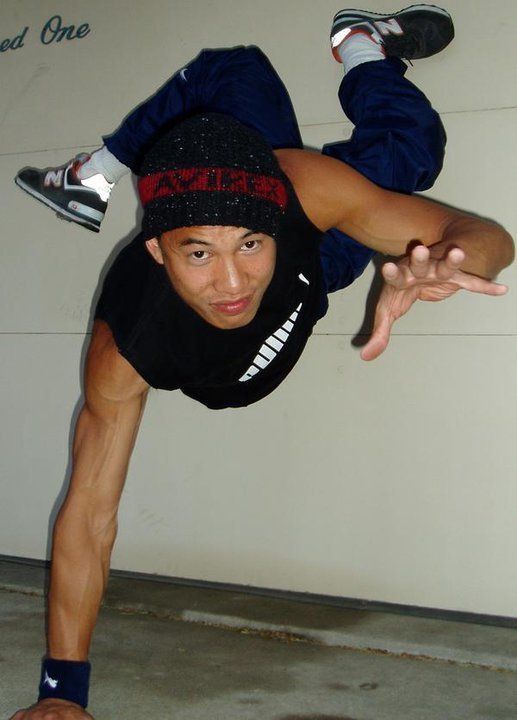
Drill how to isolate the different parts of the wave, but incorporate it into your grooves.
You can start the full body wave from different body parts (like from the ground-up).
Technique 4: Glides
Learn how to Glide:
Do the step-glide by stepping out with one foot, then sliding it back.
Do the over-under/under-over glide by lifting the heel of one foot, and sliding the other foot in front of it. Take that same foot, and slide it behind the other foot.
Drill Popping glides:
Practice the Step Glide with Boogie Frantick with this free YouTube drill:
More practice:
- Do the over-under/under-over glide 4 times in one direction, then 4 times in the opposite direction
Things to remember:
Footwork doesn’t mean your upper body isn’t doing anything! Add your own flavor with grooves or head looks, etc.
Gliding is all about shifting your weight on your feet. Pay attention to which foot and where (heel/toe) your weight is.
Review: Hitting, Arm Waves, Body Waves, Glides
Re-visit the techniques from weeks 1 and 2. Combine all the techniques that you learned in a guided freestyle.
Play this song:
- 2 8-counts: Hit with your arms in any position
- 2 8-counts: Wave both arms in any angle
- 2 8-counts: Do the body wave
- 2 8-counts: Do the step-glide in any direction
- 2 8-counts: Hit with your chest
- 1 8-count: Wave only 1 arm, in our out
- 1 8-counts: Wave with the other arm, in our out
- 2 8-counts: Body wave as you step out with your feet
- 2 8-counts: Do the over-under glide
- Remainder of the song: Combine any of the techniques in your own freestyle
Popping Technique 5: Isolations / Fixed Points
Learn how to do isolations and fixed points:
Isolate one body part and move it while the rest of your body stays still, or
Keep one body part at a fixed point as the rest of your body moves around it.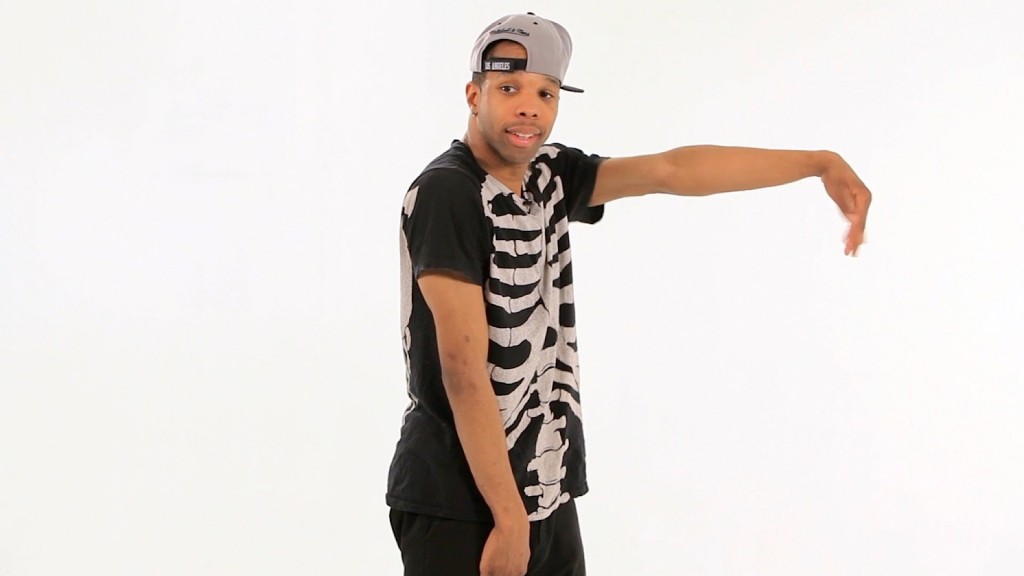
Drill Popping isolations and fixed points:
Play this song:
- 4 8-counts: Isolate your head by moving it front and back
- 4 8-counts: Isolate your head by moving it side to side
- 4 8-counts: Isolate your head by moving it in a circular motion, like you’re making a letter “O”
- 4 8-counts: Extend your arms straight in front of you, and create circles with your hands
- 4 8-counts: Keep the same position, then start bending/moving at your wrists and elbows
- 4 8-counts: Isolate your legs by doing an “in-place” glide – keeping one leg planted while the other glides in front of it and back
- 8 8-counts: Fix point different things, like putting your hand on a “wall” and dancing around it, or holding a “ball” and only moving the ball
Things to remember:
Isolations and fixed points are great tools to create concepts, imagery, and stories. Solid balance is key when fix pointing your leg(s) and moving your upper body.
Solid balance is key when fix pointing your leg(s) and moving your upper body.
Popping Technique 6: Animation
Learn Popping animation:
Ticking is when you snap into a position with your joints.
Strobing is a faster pace of dime stops; it creates this illusion of leaving a trail of movement (like you’re dancing under a strobe light).
Poppers often strobe in pedestrian movements like walking.
Botting is when you create a “Robot” effect with your whole body using parts of these techniques. It makes your body/movements look “fake.”
Drill Popping animation:
Start this mixtape:
- Tick through the entire 12-point arm wave for 5 minutes straight
- Do the 4-point tick walk: stepping forward with one foot, and ticking the other leg in 4 points as you complete the step
- Strobe as you arm wave, walk, and complete other pedestrian movements (cooking, brushing your teeth)
Things to remember:
Keep your core nice and firm when you’re ticking your limbs and make your dime stops as clean as possible when you strobe.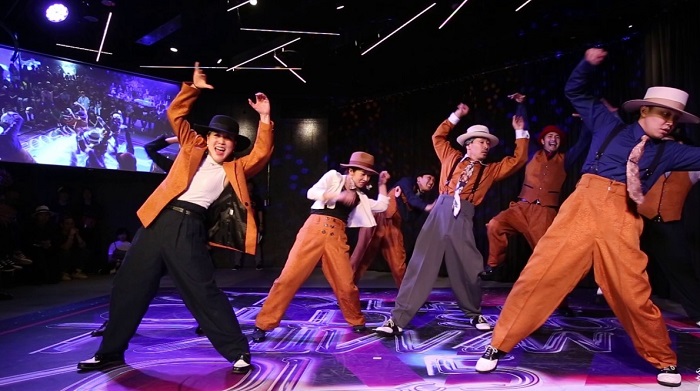
Popping Technique 7: Fresno
Learn how to do the Fresno:
The Fresno is a part of Popping / Boogaloo technique. Shift your weight from side to side as you hit with each leg and arm.
Drill the Popping Fresno:
Play this mixtape:
- 4 8-counts: Do the Fresno (1 hit makes you move, the 2nd makes you stop)
- 4 8-counts: Hit your bottom right diagonal, bottom mid position, then bottom left diagonal
- 4 8-counts: Do the Fresno in a “single single double double,” AKA your arms hitting right left right right, left right left left
- 8 8-counts: Do the Fresno with variations with your steps (walk outs)
Things to remember:
The Fresno is important because it really teaches you how to stay with the pace of the music. Use your weight to keep balance as you pivot your feet.
Your whole body turns, not just your hip!
Never snap your legs all the way back; use your ankles to buffer the hits.
Popping Technique 8: Flexes
Learn how to do flexes:
The Twist-o-flex is when you put your hands on either side of your hips, then pivot your arms so that your chin is touching one shoulder.
Turn your upper torso to meet the plane of your hand placements there, then step forward to your base position.
The Neck-o-flex is when you touch your chin to a shoulder as you extend it out, then pivot your lower body around your arms as your head stays facing that direction.
Then, turn your upper body and head to the opposite arm.
Drill Popping flexes:
Play this:
- 8 8-counts: Twist-o-flex
- 8 8-counts: Neck-o-flex
- 8 8-counts: combine both flexes in your own freestyle
Review: Isolations, Animation, Fresno, Flexes
Re-visit the techniques from weeks 4 and 5. Combine all the techniques that you learned in a guided freestyle. Play any song you like.
Play any song you like.
- 2 8-counts: Isolate any body part
- 2 8-counts: Isolate another body part
- 2 8-counts: Fixed point one body part
- 2 8-counts: Fixed point another body part
- 2 8-counts: Tick the 12-point arm wave
- 2 8-counts: Tick while walking
- 2 8-counts: Strobe from/to any position
- 2 8-counts: Do the Fresno
- 2 8-counts: Do the Twist-o-flex
- 2 8-counts: Do the Neck-o-flex
- Remainder of the song: combine any of the techniques in your own freestyle
Popping Technique 9: Walk Out and Boogaloo
Learn the Walk Out and Boogaloo:
Do the Walk Out by crossing one leg in front and across from you. With that some foot, step toward the other diagonal.
Twist to that direction, then step forward with the back foot. Use the same foot to step behind yourself, then pivot to the front, and bring both feet in.
The Boogaloo is when you do a full body wave, starting from your head rolling all the way around, rolling your shoulders in opposite directions, pushing your chest out, then bringing your hips and knees out and around.
Drill the Walk Out and Boogaloo:
Play this:
- 14 8-counts: Hit all the 7 points of the walk out 4 times each.
- 14 8-counts: Use your opposite foot to start and hit all the 7 points of the walk out 4 times each.
- Repeat hitting during the walk out on each side, but 2 times in each position.
- Repeat again, 1 hit in each position, in tempo with the music.
- Draw a “figure 8” with your knees to prepare to do the Boogaloo roll.
- 8 8-counts: do slow Boogaloo rolls - fill up the full 8-count per roll
- 8 8-counts: medium Boogaloo rolls - 4 counts per roll
- 4 8-counts: fast Boogaloo rolls - 2 counts per roll
Things to remember:
For the walk out, use your opposite arm when you step forward with a leg.
Stay loose with your body as you do the Boogaloo roll.
Popping Technique 10: Twists
Learn Popping twists:
Do the Egyptian Twist by making angular pictures with your arms as you pivot your focus and toes toward different directions.
Drill Popping twists:
Play this:
- 1 8-count of Egyptian twist to your right.
- 1 8-count of Egyptian to your left.
- 2 Egyptian twists to your right, 2 steps to your right.
- 2 Egyptian twists to your left, 2 steps to your left.
Things to remember:
Keep your upper body and shoulders squared to the front, with your face following your toes. Hit with each time you pivot or step.
Popping Technique 11: Tutting
Learn how to Tut:
Tut by creating different lines and shapes with your arms. Bend from the elbows, wrists, and fingers.
Drill tutting exercises:
- Play any song
- From a resting position, bend at your elbow to raise one arm to chest level
- From there, extend it straight up
- Go through this same pathway to bring your arm down
- 8 8-counts: Drill your arms in this up-up-down-down pattern, alternating between arms
- Now raise both arms by the elbows in front of your face, and bend in a 90 degree angle at the wrist
- 8 8-counts: Alternate bending each side
- 4 8-counts: Extend your arms straight out on each side, and bend at the the elbows and wrists at 90 degree angles to create a “Z” then rotate them inward to create a box
Things to remember:
Keep your angles clean! 90, 180 degrees
Review: Boogaloo, Twists, Tutting
Combine all the techniques that you learned in a guided freestyle.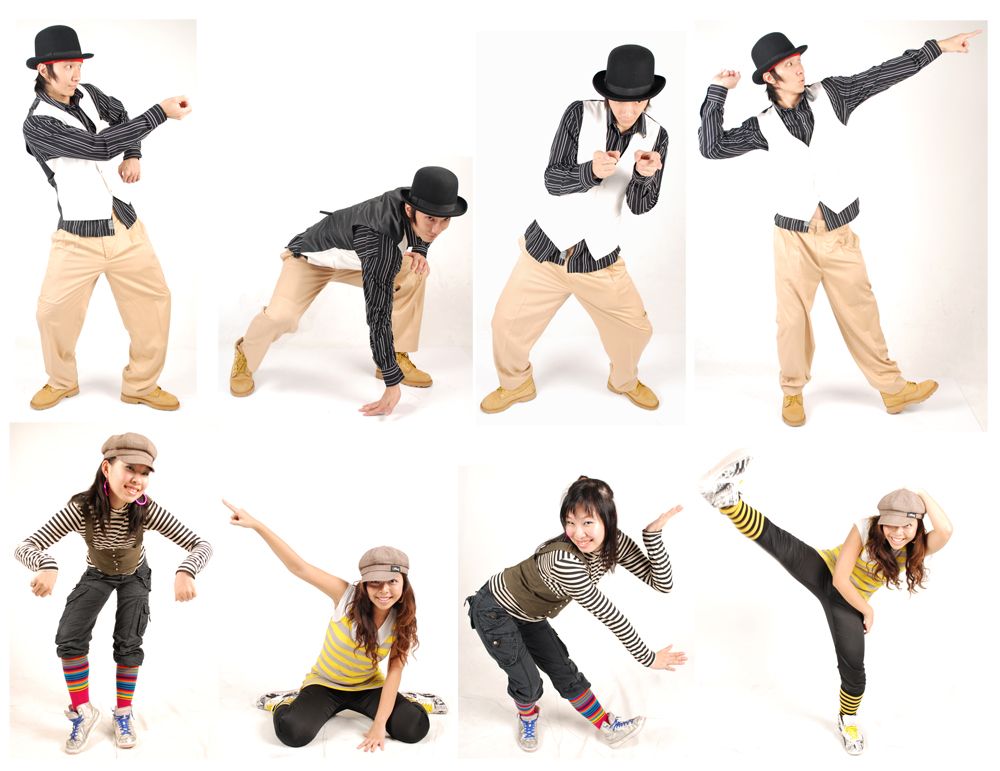
- 2 8-counts: Boogaloo rolls
- 2 8-counts: Egyptian twist
- 2 8-counts: Tut with just your arms
- 2 8-counts: Tut while traveling with footwork (you can just step, or glide)
- 2 8-counts: Walk out and Boogaloo rolls
- 2 8-counts: Egyptian twist in different variations
- Remainder of the song: combine any of the techniques in your own freestyle
Use this guide to train your basic Popping technique within 2 months.
If you want to follow along with a tutorial, STEEZY Studio’s Popping Program (taught by renowned Poppers Boogie Frantick, Kid Boogie, and Slim Boogie) is a much easier way to train.
All you have to do is plan out your schedule and follow along with the videos. Sign up here to try it out for free!
Learn to dance Popping in Moscow
- Popping
- Hip Hop Dancing
- DanceHall
- Twerk | Twerk
- Go-Go | Go-Go
- Breakdance
- Jazz Funk
- Stretching
- House Dance
- Body Work
- High Heels
- Body Made
- Contemporary
- Show all
Schedule
Popping (pop; from the English Poppin') is a dance direction based on the hip-hop technique that creates the effect of a sharp fixation of the muscles in the dancer's body - pop or hit .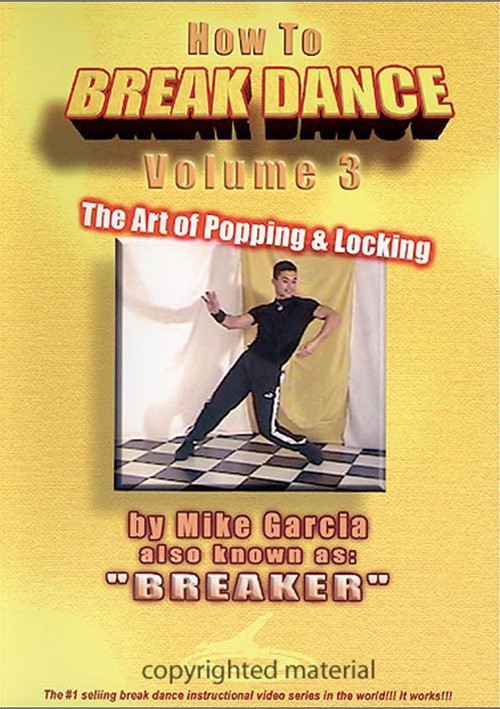 This is where the name Papping comes from.
This is where the name Papping comes from.
Learning to dance popping is fun and useful:
-
Train to the best in your business
-
Feel every part of your body
-
Find many new and
interesting friends 9000 9000 9000Develop your sense of rhythm and plasticity
-
Become part of our big and friendly family
-
Speaken with us at competitions and festivals
-
Participate in Batlah, Castings
and Flashmobach -
Participate in the popular show programs
How to learn how to dance pop -uping in Moscow?
Popping is not in vain considered one of the most expressive and vibrant styles of dance. It appeared at the end of the 20th century, when funk music ruled the world. This incendiary dance borrowed some elements from the locking. His technique requires controlling the muscles of the body, contracting them to create characteristic thrusts and then stopping abruptly. In our school you can learn how to dance popping for beginners and beginners in Moscow in the CAO and SEAD. Did you know that the legendary "moonwalk" is a popping element?
It appeared at the end of the 20th century, when funk music ruled the world. This incendiary dance borrowed some elements from the locking. His technique requires controlling the muscles of the body, contracting them to create characteristic thrusts and then stopping abruptly. In our school you can learn how to dance popping for beginners and beginners in Moscow in the CAO and SEAD. Did you know that the legendary "moonwalk" is a popping element?
Learn how to dance popping in Moscow: how to become a star?
Popping Dance in its movements and techniques is somewhat similar to a lively robot dance. Previously, it was often confused with top breakdancing, but these directions are completely different. Popping today can be found on the dance floors of discos and clubs. The emphasis in technical terms is on isolation of movements, complete control of your body and on the development of muscle contractions - “dads” or “hits”. Our teachers are winners of international and all-Russian competitions, the best choreographers of the CIS countries and they will teach you all these subtleties.
Do you want to learn how to dance popping? Take the First Step
Each popping lesson begins with a traditional warm-up, followed by the basic movements. The lesson ends with the basics of improvisation, which are performed to the appropriate music. For beginners, this is the best direction and new dance elements are learned without any difficulty. Even if something remains unclear, our teachers will explain and show everything. Learning how to dance popping for guys and boys in our school near the Dmitrovskaya metro station is like becoming a dance floor star in real life. You just need to start. At the same time, age does not matter: we invite everyone who is 10 or more years old.
It is worth learning how to dance popping for girls and girls in a studio near Proletarskaya station and Volgogradsky prospect. By taking control of your body, you can better manage your emotions. As a bonus, you get an excellent physical shape and the attention of guys.
In our school you will find:
- an opportunity to learn how to dance popping in the shortest possible time from the very basics;
- new friends and associates;
- experienced tutors;
- comfortable and spacious rooms;
- a lot of fun and inspiration.
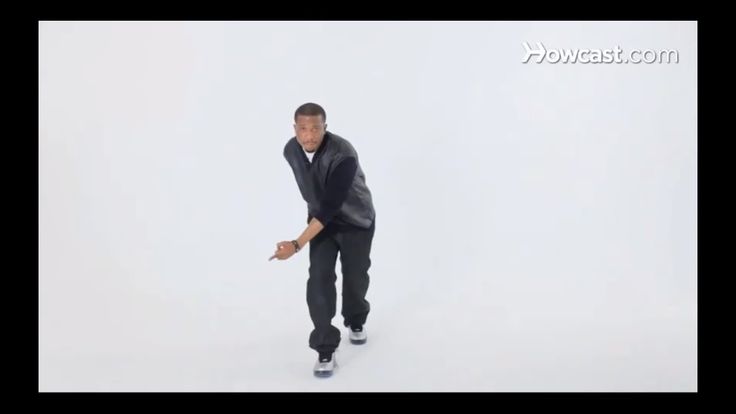
Learning how to dance popping for children and teenagers is not only easy, but also affordable. The first lesson is absolutely free. You can quickly get to us from the stations Avtozavodskaya, Krestyanskaya Zastava. Sign up right now!
Get an official exemption from physical education!
When you purchase a subscription for a month of classes and get an official exemption from physical education!
Dancing
Chosen 2373 people
Physical education
Selected 26 people
What do you choose?
LET'S LEARN TO DANCE COOL IN 24 HOURS!
Even if you have never danced
Hip-HopTwerk / Booty DanceBreakdanceDance MIXJazz FunkSexy R'n'BStretchingDanceHallBody WorkLady MIXGo-GoStreet DanceContemporary DanceChildren's DanceDance not listed yet
Benefits
- FAMILYThis is a Family. And we fully justify our name.
- Walking distance Metro, MCD and Railway Dmitrovskaya
- AtmosphereWhere every beginner will feel at home
Popping: the dance style of the future
Since the beginning of funk music, many styles of dance have been born, each type trying to match the music and adapt more favorably to it. Moreover, everyone wanted to outshine each other. The movements were striking in their technicality and plasticity. To this day, popping is considered the most spectacular and multifaceted. This bright and illusory dance is full of expressiveness, freedom and fantasy.
Moreover, everyone wanted to outshine each other. The movements were striking in their technicality and plasticity. To this day, popping is considered the most spectacular and multifaceted. This bright and illusory dance is full of expressiveness, freedom and fantasy.
What is popping?
A distinctive feature of this dance is a sharp contraction and relaxation of the dancer's muscles: you need to create the effect of shuddering the body, like from a stun gun - this movement is called "dad" or "hit", hence the name. The performer of this style of dance tries to create the illusion of a non-human body making unnatural and physically impossible movements.
History
The popping dance style originated in the 70s on the streets of California, and was popularized by a group of poppers calling themselves the Electric Boogaloos. Its leader - Sam Solomon (Boogaloo Sam) - created the movements that are performed today in the style of popping and locking. With each muscle contraction, Sem shouted out the word "pop", since then the technique of his movements has been called popping. The history of its origin is rather unsightly, but this did not prevent the dance from spreading very quickly among young people, and after watching the movie Breakin, the majority of the population mistakenly considered popping and its branches to be the top break.
The history of its origin is rather unsightly, but this did not prevent the dance from spreading very quickly among young people, and after watching the movie Breakin, the majority of the population mistakenly considered popping and its branches to be the top break.
Popping dance overview: types of movements
The dance is based on many movement techniques - this is necessary to create variety in performance. At the same time, they can exist as separate styles or be an addition to the main one. Popping includes seven basic techniques.
- The most popular is waving. The dancer must depict a wave that passes through the entire body or through its individual parts. This technique is very often used in other street styles, such as breaking and locking. You need to have very good control over your body in order to perform this movement believably. The most famous representative of this style is David Elsewhere.
- The next known technique is gliding. Here the situation is much more complicated: rolling from toe to heel, you need to depict sliding on the floor, and when the steps become more technical, it will seem that the dancer is moving through the air.
 The peculiarity of this style is that the body and hands are not involved and should not move at all, then the technique itself looks very impressive. There are more than forty types of gliding, but the most popular are sliding forward and backward, left and right, kneeling, and zigzag. The mimes performing on the streets were the first to perform them, calling such movements "walking against the wind."
The peculiarity of this style is that the body and hands are not involved and should not move at all, then the technique itself looks very impressive. There are more than forty types of gliding, but the most popular are sliding forward and backward, left and right, kneeling, and zigzag. The mimes performing on the streets were the first to perform them, calling such movements "walking against the wind."
- King tut, or tatting, is a movement that imitates the Egyptian pharaohs. It is performed mainly by hand. The task of the dancer is to create the most direct angles between the palms, shoulders and hands. It is believed that tatting became popular after the release of the next series of the Bugs Bunny cartoon, in which he depicted a series of movements using right angles.
- Finger tut - all movements are performed only with the fingers. Quite an impressive sight. Sometimes geometric figures are built very quickly, which is incorrect execution. The movements must be performed in time with the music, and then the beauty of the performance is fully revealed.
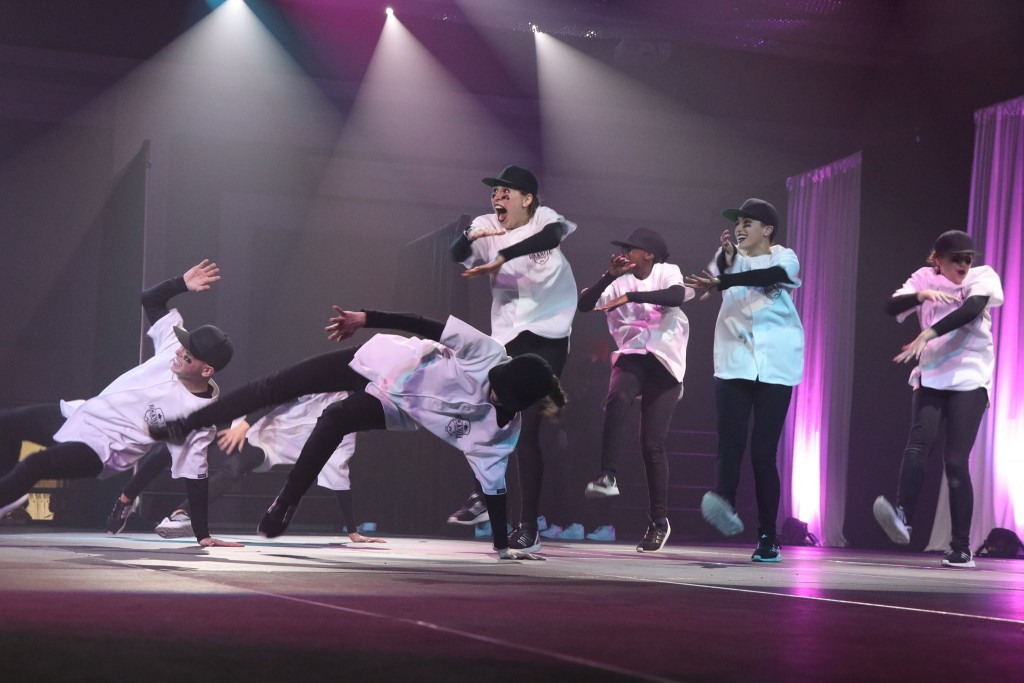
- When the dancer stops several times for a fraction of a second, and his movements resemble movement in the light of a strobe, this means that you have another popping technique - strobing, and it is performed on relaxed muscles for a more believable result. B-boys first learn to practice familiar moves, such as putting on a hat or gloves, then gradually increase the challenge.
- The slow motion technique is based on moving slowly, like a videotape has stuck.
- Puppet is a puppet style in which the dancer transforms into a puppet and copies its movements. Sometimes this style is called robot dance.
"Moonwalk": history
The popping style of dance became so popular that some artists and singers included it in their musical productions. The most famous performer of this style was Michael Jackson. In his performances, he used the gliding technique (sliding): it was the famous "moon walk" that became his hallmark. Many believe that this movement was created by Jackson himself, but this is not so, the technique was used before by other artists. For the first time, the moonwalk appeared in the film "Children of Paradise" 1945 years old.
For the first time, the moonwalk appeared in the film "Children of Paradise" 1945 years old.
Etienne Decroix and Jean-Louis Barrault are considered to be the authors: working as mimes, they used their innovation more than once. Ten years later, the tap dancer Bill Bailey repeated it, slipping backwards backstage, then the famous mime Marcel Marceau used this technique in his performances for forty years. He was replaced by the eccentric James Brown: the soul singer performed gliding in the movie The Blues Brothers. Many other stars have repeated the moonwalk in the hope that it will bring them at least a modicum of popularity, but only Michael Jackson was able to conquer billions of people with the ability to "glide through the air."
Dancers' clothes
In the dance style, popping was previously considered a tradition to perform it in a classic costume: a white shirt, black trousers and a hat served as an indispensable attribute for poppers, their performances in such clothes looked very elegant and unusual. Over time, interest in the classical style faded, today dancers look at it much easier. Elegance was replaced by loose-fitting trousers and oversized T-shirts, but, whatever one may say, the hat remained the hallmark of popping.
Over time, interest in the classical style faded, today dancers look at it much easier. Elegance was replaced by loose-fitting trousers and oversized T-shirts, but, whatever one may say, the hat remained the hallmark of popping.
Les Twins - Bourgeois brothers
Today popping is a dance boom that has burst into the lives of many dancers, and every advanced hiphoper dreams of learning to move like a robot or "walk against the wind". But only a few reach the heights of mastery and impeccable control of their bodies. One of these was the Bourgeois twins from France.
Children from early childhood admired their idol M. Jackson and dreamed one day to learn how to master the body in the same virtuoso way. On the streets of their hometown, the twins got acquainted with hip-hop, popping and locking. Combining these styles, the guys created something new, as they themselves say, "hip-hop new style." Lauren and Larry have mastered all the popping techniques and master them to perfection: today they conduct many master classes in all street styles, they can often be seen as judges at competitions.
